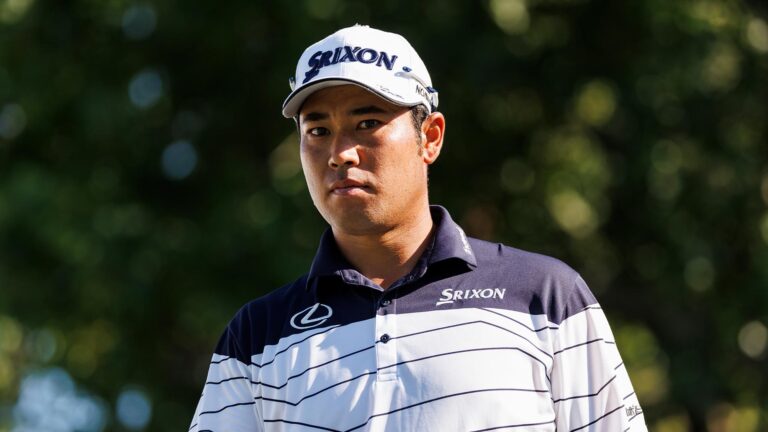Hideki Matsuyama’s victory at the FedEx St. Jude Championship was anything but straightforward, marked by drama that nearly derailed his chances. Leading by five shots at 19-under-par after a birdie on the 11th hole, Matsuyama seemed in full control as he approached the 12th hole. However, his journey took a sudden turn when PGA Tour chief referee Gary Young approached him with concerns about a potential rules infraction from earlier in the round.
The incident in question occurred on the 7th hole, a challenging 475-yard par-4. Matsuyama’s approach shot missed the green, landing in a collection area just below the surface. Before playing his third shot, he noticed a large pitch mark near his ball’s landing spot and proceeded to repair it by stamping it down with his foot. This action raised concerns about a possible violation of Rule 8.1, which prohibits players from improving conditions affecting their stroke, specifically on their line of play.
Young explained that while video evidence showed Matsuyama’s actions were close to a violation, the critical issue was whether the repaired pitch mark was indeed on his line of play. “It was close enough to warrant a discussion,” Young told Golf Channel’s Todd Lewis. Despite the discomfort of addressing the issue mid-round, it was necessary to clarify the situation, as it could impact Matsuyama’s strategy and possibly result in a two-stroke penalty.
Matsuyama explained that he routinely repairs pitch marks and believed the one in question was not on his line of play, a sentiment echoed by Young after consulting with the rules committee and the United States Golf Association (USGA). Ultimately, the committee decided not to assess a penalty, determining that Matsuyama had appropriately repaired the ball mark under Rule 8.1b. Young supported this decision, emphasizing that there was no intent by Matsuyama to gain an unfair advantage.
After the ruling, Matsuyama expressed relief and confidence, stating through an interpreter, “It was really a non-issue… They just wanted to ensure the rules were followed, which they were. It didn’t affect me the rest of the day.”
However, the psychological impact of the mid-round discussion seemed evident. Matsuyama’s five-shot lead quickly evaporated over the next four holes. He bogeyed the 12th after a three-putt, found water on the 14th, and suffered a double bogey on the 15th, which left him trailing Viktor Hovland by one shot by the time he reached the 16th tee.
Despite the setback, Matsuyama showcased his resilience. As the round reached its climax, he birdied the difficult 17th and 18th holes, securing a two-shot victory. The dramatic turn of events not only captivated the golf world but also highlighted the pressures that come with playing at the highest level, where even a minor rules inquiry can potentially shift the outcome of a tournament.
In the end, Matsuyama’s triumph in Memphis was a testament to his composure under pressure, turning a potentially crippling situation into yet another victory on the PGA Tour.
